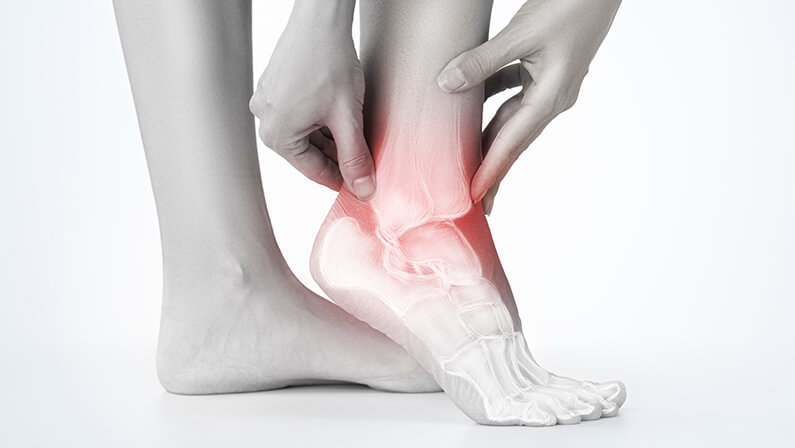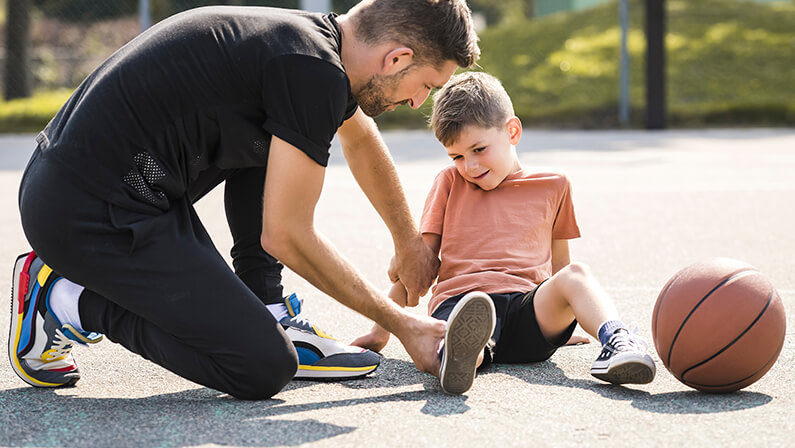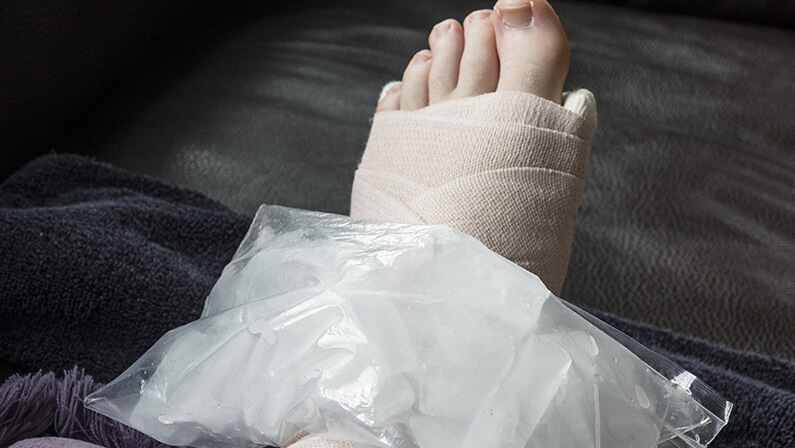In the journey to swift recovery from an ankle injury, time is of the essence. Whether you’re an athlete or simply seeking a quick return to normalcy, this guide unveils essential steps and expert advice to expedite healing and reclaim full mobility.
Here’s how to start a proactive path towards a faster ankle recovery. Understanding the nature of ankle injuries and recognizing their distinct types is the first crucial step.
You can tailor your approach and set the foundation for a targeted and efficient recovery journey by gaining insights into sprains, strains, and fractures.
Understanding Ankle Injuries

Ankle injuries can be complex, demanding a nuanced understanding for adequate recovery. Whether you’re an athlete striving for peak performance or aiming to swiftly resume daily activities, a fundamental understanding of ankle injuries is paramount.
From common sprains to more severe strains and fractures, delving into the intricacies of these injuries empowers you to navigate a tailored and strategic path toward rehabilitation.
Types of ankle injuries
Ankle injuries manifest in various forms, each presenting unique challenges in the journey to recovery. Understanding these distinct types is crucial for devising an effective rehabilitation strategy.
- Sprains. Among the most prevalent, sprains occur when ligaments—the rugged bands connecting bones—are stretched or torn. This often transpires during sudden twists or turns, causing discomfort, swelling, and instability in the affected ankle.

- Strains. Strains involve the overstretching or tearing of muscles or tendons surrounding the ankle. Typically caused by excessive force or repetitive motion, strains can result in pain, muscle spasms, and hindered range of motion.
- Fractures. Fractures, the most severe category, entail the breakage of bones in the ankle. These injuries stem from impactful forces or sudden impacts, leading to pain, swelling, and, in severe cases, visible deformity. Recognizing the nuances of sprains, strains, and fractures is pivotal for tailoring a targeted and efficient recovery plan.
The RICE Method: Immediate Actions to Take
In the critical moments following an ankle injury, swift and effective measures can significantly impact the recovery process. The RICE method—Rest, Ice, Compression, and Elevation—is a cornerstone for initial care, providing essential steps to minimize pain and expedite healing.
Rest
Begin by giving your ankle the vital rest it needs. Avoid weight-bearing activities and provide the injured ankle with a break to prevent further strain and facilitate the initial stages of recovery.
Ice

The application of ice is a powerful tool for reducing swelling and alleviating pain. Properly ice the affected area to constrict blood vessels, diminishing inflammation and creating a more favorable environment for healing.
Compression
Utilizing compression bandages is a critical component of the RICE method. Learn how to effectively apply compression to the injured ankle, as it aids in reducing swelling and provides support to the wounded tissues.
Elevation
Elevating the ankle is a simple yet effective technique to promote drainage of fluids away from the injured area, minimizing inflammation. Discover the proper methods for elevation to enhance the efficiency of the RICE method and kickstart your ankle recovery journey.
Seeking Medical Help and Proper Diagnosis
While initial self-care is essential, obtaining professional medical assistance is crucial for a thorough understanding of your ankle injury and ensuring an appropriate course of action.
Whether your ankle discomfort stems from a mild sprain, strain, or a more serious fracture, consulting with a healthcare professional provides a comprehensive assessment. Proper diagnosis is the key to tailoring an effective treatment plan and avoiding potential complications.
Implementing a Recovery Plan
As you embark on the path to ankle recovery, a well-structured plan is crucial for a successful and sustainable outcome. This section guides navigating the stages of recovery and incorporating exercises tailored to each phase.
Stages of Recovery (Acute, Subacute, and Chronic)
Understanding the progression of recovery is fundamental.
Recovery Exercises and Stretching Routines for Each Stage
Discover targeted exercises and stretching routines specifically designed for each stage of recovery. From gentle movements in the acute phase to more dynamic exercises as you progress, this section equips you with comprehensive activities to enhance flexibility and strength.
Targeted Strengthening and Flexibility Exercises for Long-Term Rehabilitation
Long-term rehabilitation requires a focused effort. Uncover a range of exercises that aid in immediate recovery and contribute to the overall strength and flexibility of your ankle in the long run. Implementing these targeted exercises will pave the way for sustained ankle health and resilience.
Ankle Injuries Supportive Treatments and Aids
As you navigate the journey of ankle recovery, exploring supportive treatments and aids is integral to a comprehensive rehabilitation strategy.
Topical and Oral Medications
Learn about the role of medications in managing pain and inflammation associated with ankle injuries. From topical creams to oral medications, understanding their usage can enhance your comfort during recovery.
Ankle Braces, Wraps, and Other Support Aids
These assistive devices are crucial in stabilizing the ankle, reducing strain, and providing the necessary support for optimal healing.
Physiotherapy Sessions
Explore the significance of physiotherapy in ankle rehabilitation. Professional guidance through targeted exercises and therapeutic interventions can accelerate recovery, improve mobility, and reduce the risk of future injuries.
Preventing Future Ankle Injuries
Here are proactive measures that go beyond recovery, fostering enduring ankle health and resilience.
- Strength and Flexibility Exercises: Prioritize ongoing exercises that enhance ankle strength and flexibility, reducing the likelihood of future injuries.
- Proper Footwear: Invest in supportive footwear with good arch support and adequate shock absorption to provide a stable foundation for your ankles.
- Warm-Up and Cool Down: Incorporate thorough warm-up and cool-down routines before and after physical activities to prepare your ankles for movement and prevent strains.
- Balance and Proprioception Training: Engage in exercises that improve balance and proprioception, fostering better coordination and reducing the risk of ankle twists.
- Caution on Uneven Surfaces: Be mindful of your surroundings, especially on uneven terrain. Watch your steps to avoid unexpected twists or turns.
- Maintain a Healthy Weight: Manage your weight to alleviate excess stress on your ankles, promoting overall joint health.
- Regular Check-ups: Schedule periodic check-ups with a healthcare professional to assess your ankle health and address any emerging concerns promptly.
- Listen to Your Body: Pay attention to signs of fatigue or discomfort during physical activities. Rest when needed and address any lingering issues promptly.
By incorporating these preventive measures into your lifestyle, you can fortify your ankles and minimize the risk of future injuries, ensuring a more resilient and injury-resistant lower extremity.
Seek Treatment from Aether Health – Kingwood ER

Seeking professional guidance is crucial for personalized advice when it comes to ankle injury treatment.
Consult with the experts at Aether Health – Kingwood ER to take the next step toward a healthier ankle. Whether you’re in recovery or proactively preventing future injuries, their dedicated team can provide the tailored care you need. Your ankle health is a journey; with the proper support, you can stride confidently towards a resilient and injury-free tomorrow. Talk to us today to learn more about our treatment services.




